Lady of Firsts Janet Guthrie Did More than Destroy NASCAR Glass Ceiling
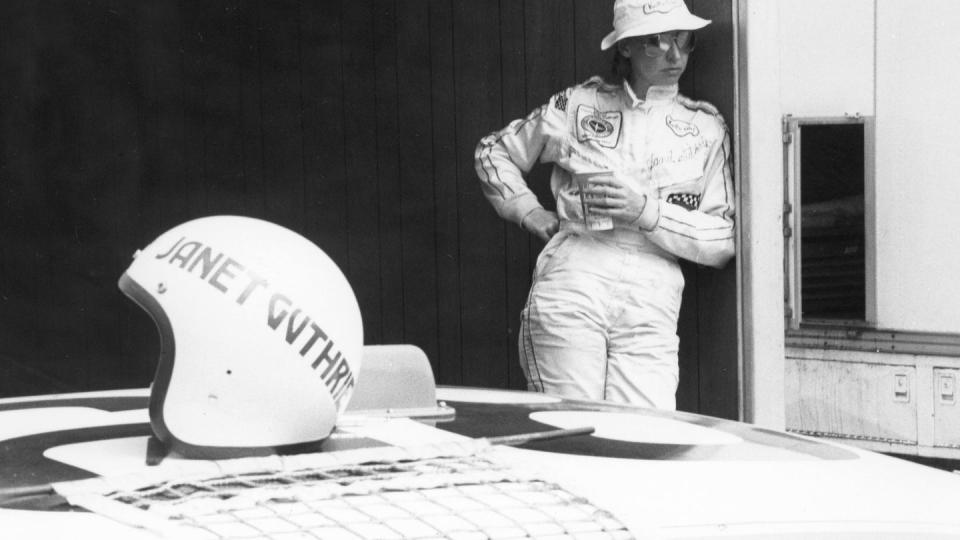
"Hearst Magazines and Yahoo may earn commission or revenue on some items through these links."
Janet Guthrie competed in just 33 NASCAR Cup races, but she provided hope for the girls who watched her make history and for those who followed in her footsteps.
When Guthrie arrived in Charlotte in 1976, women weren’t allowed in NASCAR’s garage and pit areas, and many of the competitors didn’t want her around.
Today, Guthrie’s helmet and driver’s uniform can be found in the Smithsonian Institution in Washington, D.C.
Normally the number of championships and races won by a competitor are the only facts considered by those determining whether someone is worthy of a place in a Hall of Fame, but sometimes it takes a behind-the-scenes look at a person’s career to truly understand the magnitude of their accomplishments in relation to the adversity they faced.
Such is the case with Jane Guthrie who is this year’s recipient of NASCAR’s Landmark Award. The first driver to receive the honor, the award goes to someone who has made “significant contributions to the growth and esteem of NASCAR.” Guthrie fits that description as she broke the glass ceiling for women drivers in NASCAR as well as the Indianapolis 500.
Guthrie was the first woman to:
Race in the Daytona 500 and the Indianapolis 500.
Compete in the Coca-Cola 600.
Compete in a superspeedway NASCAR Cup race.
Lead a NASCAR Cup race.
However, to fully understand the magnitude of Guthrie’s accomplishments, one must first become familiar with the 1970s.
It was a decade when Title IX became law, guaranteeing male and female students and employees in educational settings equal opportunity. The coaches of many men’s teams decried the federal ruling as ruining athletic programs because schools now had to provide sports for female athletes, thus depriving their programs of the funding to which they were accustomed. Women’s basketball had existed for decades, but now there must be softball, volleyball, golf, track-and-field, etc., for females.
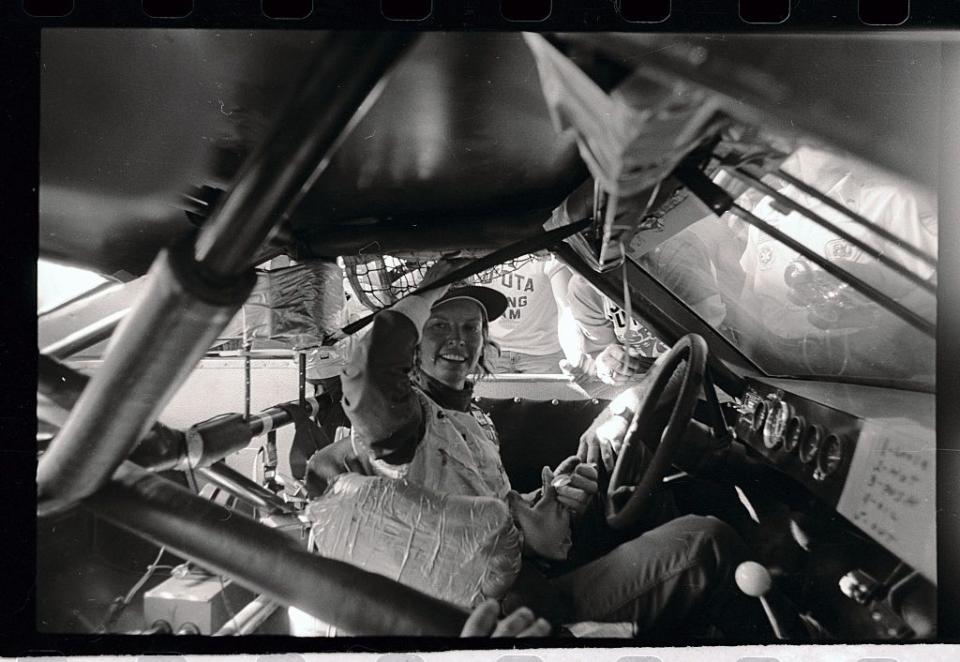
The United States Army was eliminating the Women’s Army Corps and assimilating women into the regular army. In other words, America was undergoing a fundamental social change regarding women and many people weren’t ready to accept it. Guthrie constantly found opposition, but that didn’t deter the University of Michigan graduate who possessed a physics degree and was an aerospace engineer.
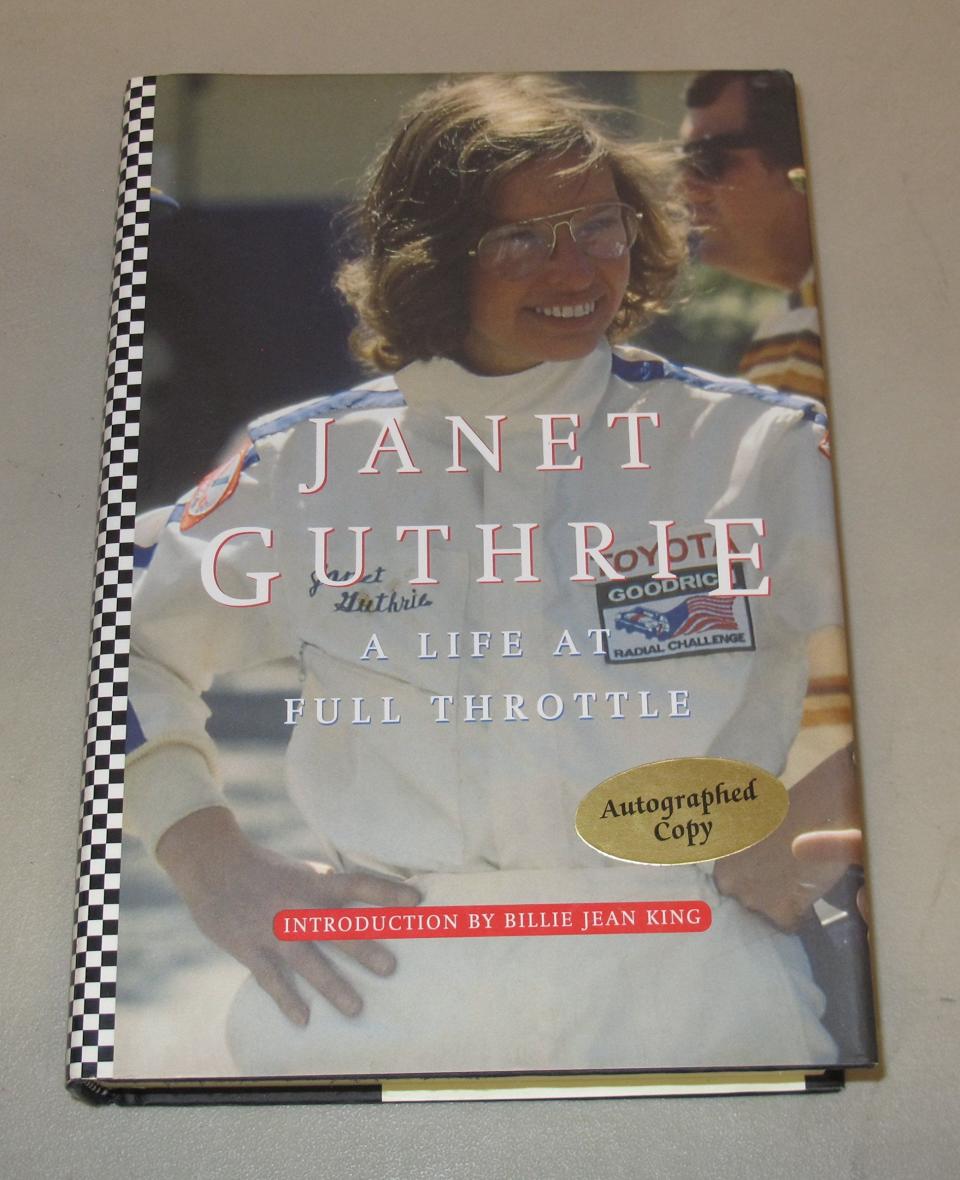
Janet Guthrie: A Life At Full Throttle
amazon.com
Guthrie began racing in 1963 in the Sports Car Club of America and by 1972 she was racing full time. However, it was 1976 when she passed her rookie test at Indianapolis Motor Speedway and became the first woman to attempt to qualify for the Indianapolis 500. She didn’t make the starting grid that year so H.A. “Humpy” Wheeler, who had recently taken over as Charlotte Motor Speedway’s promoter, lured her to North Carolina to compete in the race then known as the World 600.
The anger and hostility she faced in the days leading up to stock car racing’s longest race were unrelenting. In her autobiography Janet Guthrie: A Life at Full Throttle, she talks about hearing shouts from the grandstands: “No tits in the pits, get the tits out of the pits!” Even though women had competed in NASCAR in its early years, only one woman had driven in one NASCAR race since 1955. Also, no woman had ever competed on a superspeedway or in a race longer than 200 miles.
When Guthrie arrived in Charlotte in 1976, women weren’t allowed in NASCAR’s garage and pit areas, and many of the competitors didn’t want her around. They didn’t think she would qualify for the race and if she did, she would need a relief driver. After all, stock cars of that era weighed more than 3,700 pounds and had no power steering. There were no cool suits for the drivers and no spotters.
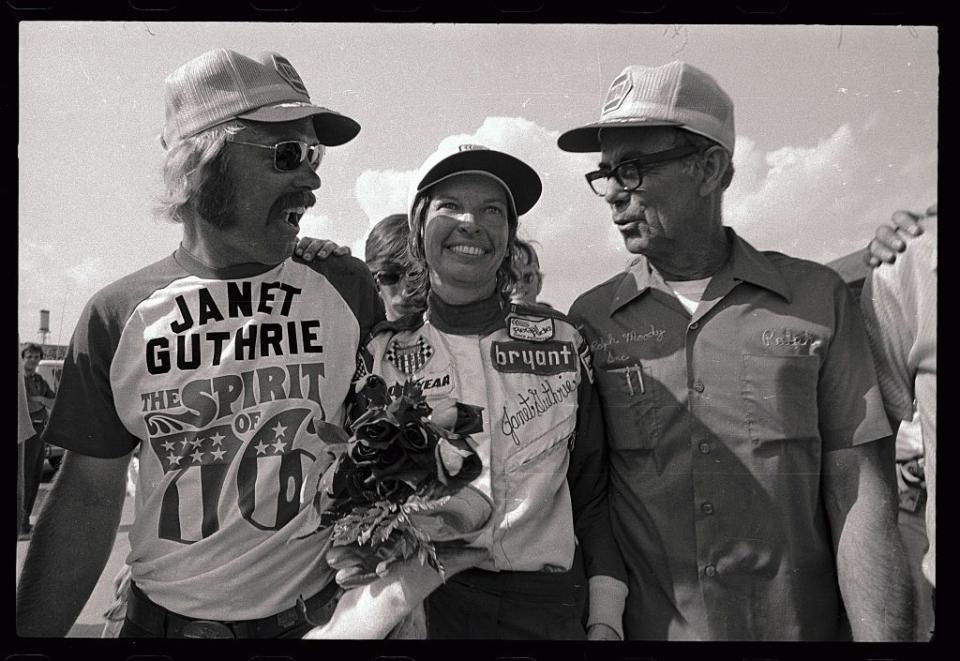
The race started at midday when it was already 85 degrees in the shade and the heat in the car was estimated to reach 130 to 150 degrees. Forty-eight drivers were attempting to make the 40-car field and when it came time to qualify Guthrie had only seven practice laps under her belt.
Guthrie says in her book the news articles leading up to the 600 matched what she felt in the track’s garage: “a bell-shaped curve from hostile to skeptical, heavy on the skeptical, with a little open-mindedness at one end.”
Even though Ralph Moody, who gained fame in the 1960s as half of Ford’s extremely successful Holman-Moody operation, oversaw Guthrie’s entry that didn’t thaw the chill she felt. She said when she shook hands with Richard Petty “I thought I’d get frostbite.” Petty was later quoted as saying, “She’s no lady. If she was she’d be at home. There’s a lot of difference in being a lady and being a woman.”
Cale Yarborough assisted with her effort solely at the request of Rolla Vollstedt, who had fielded a car for the South Carolina driver in the 1967 Indy 500. Junior Johnson, Yarborough’s NASCAR Cup car owner at the time, authorized his team to give Moody their setup. Donnie Allison also provided tips to Guthrie that she described as “valuable.”
When Guthrie was introduced on race day as the 27th qualifier, half the grandstand cheered, and the other half booed. Despite spotty radio communications with her crew during the race, a transmission that would pop out of gear, and inhaling carbon monoxide from a broken header, Guthrie drove the entire distance, never once asking for relief. She finished 15th, 21 laps behind winner David Pearson. When asked about Guthrie during his post-race interview, Pearson admitted he had joked about her a great deal in the week leading up to the race “but she did a fine job of driving. I wouldn’t mind racing with her any time.”
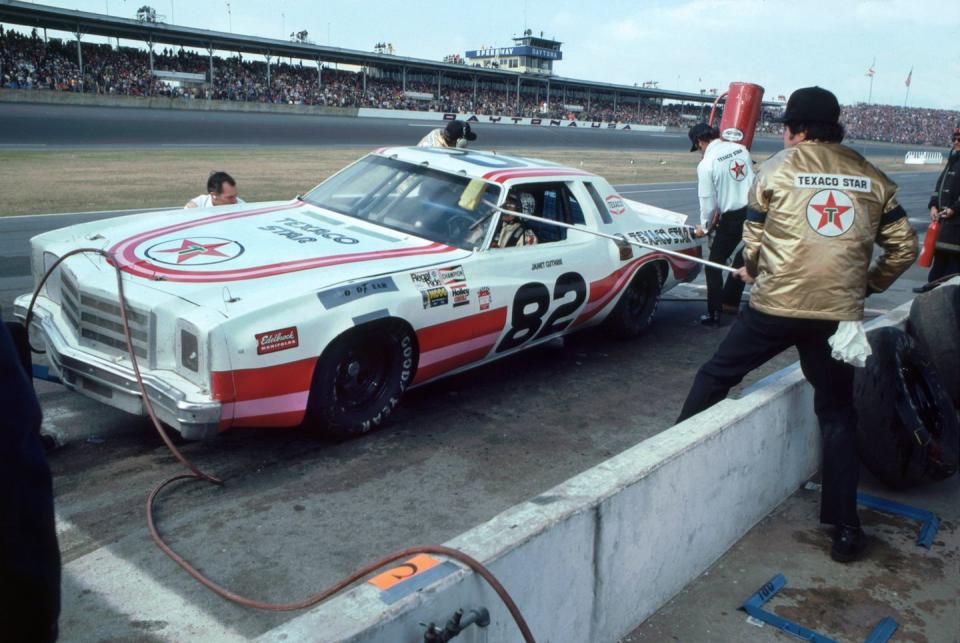
Guthrie had proven a woman could race for 600 miles. It was the following year that she raced in the Daytona 500 and the Indianapolis 500. That same year she led a NASCAR Cup race, pacing the field for five laps in the Los Angeles Times 500 at the 2.5-mile Ontario Motor Speedway. She finished 24th that day, but her place in NASCAR history had been cemented. Not based on victories and championships, but on her accomplishments in the face of adversity.
She competed in just 33 NASCAR Cup races, but she provided hope for the girls who watched her make history and for those who followed in her footsteps.
Today, Guthrie’s helmet and driver’s uniform can be found in the Smithsonian Institution in Washington, D.C. And this year, her name joins those of Jim France, H. Clay Earles, Harold Brasington, Jim Hunter, Anne Bledsoe France, Mike Helton, Edsel Ford II, and Ralph Seagraves on NASCAR’s Landmark Award. All people who had a definitive impact on NASCAR.

 Yahoo Autos
Yahoo Autos 